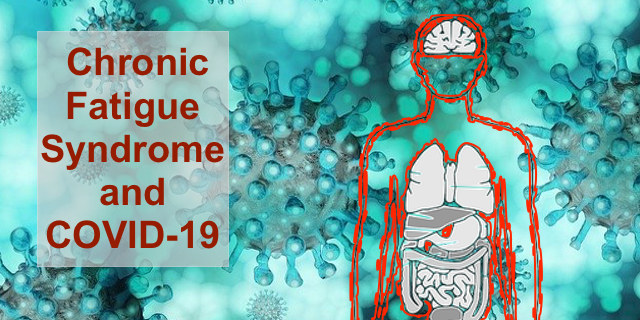People living with myalgic encephalomyelitis or chronic fatigue syndrome (ME/CFS) have had a difficult time finding physicians and others who believe that they have this debilitating condition. They’ve been told “it’s all in your head” or “physical activity will make you feel better.” They’ve gone to psychiatrists and the gym but have not gotten better. An estimated 2.5 million Americans live with ME/CFS. But their numbers may be going up.
Patients with Long COVID-19 may actually have ME/CFS. A 2011 follow-up study of 50 nurses who in 2003 had contracted SARS-CoV-1, the first cousin of COVID-19 or SARS-CoV-2, found that almost half of the nurses had symptoms that met the diagnostic criteria for ME/CFS. [1]
According to the CDC, diagnostic criteria for ME/CFS are:
ME/CFS in adults and children state that three symptoms and at least one of two additional manifestations are required for diagnosis. The three required symptoms are:
- A substantial reduction or impairment in the ability to engage in pre-illness levels of activity (occupational, educational, social or personal life) that:
- lasts for more than 6 months
- is accompanied by fatigue that is:
- often profound
- of new onset (not life-long)
- not the result of ongoing or unusual excessive exertion
- not substantially alleviated by rest
- Post-exertional malaise (PEM)* – worsening of symptoms after physical, mental or emotional exertion that would not have caused a problem before the illness. PEM often puts the patient in relapse that may last days, weeks, or even longer. For some patients, sensory overload (light and sound) can induce PEM. The symptoms typically get worse 12 to 48 hours after the activity or exposure and can last for days or even weeks.
- Unrefreshing sleep* – patients with ME/CFS may not feel better or less tired even after a full night of sleep despite the absence of specific objective sleep alterations.
At least one of the following two additional manifestations must be present:
- Cognitive impairment* – patients have problems with thinking, memory, executive function, and information processing, as well as attention deficit and impaired psychomotor functions. All can be exacerbated by exertion, effort, prolonged upright posture, stress, or time pressure, and may have serious consequences on a patient’s ability to maintain a job or attend school full time.
- Orthostatic intolerance – patients develop a worsening of symptoms upon assuming and maintaining upright posture as measured by objective heart rate and blood pressure abnormalities during standing, bedside orthostatic vital signs, or head-up tilt testing. Orthostatic symptoms including lightheadedness, fainting, increased fatigue, cognitive worsening, headaches, or nausea are worsened with quiet upright posture (either standing or sitting) during day-to-day life, and are improved (though not necessarily fully resolved) with lying down. Orthostatic intolerance is often the most bothersome manifestation of ME/CFS among adolescents.[2]
Dr. Ron Davis, professor of both biochemistry and genetics at Stanford, has been doing cutting edge research on ME/CFS. His work has found that the red blood cells of people with ME/CFS are different from normal red blood cells. Red blood cells must be able to move through tiny micro-capillaries throughout the body. The way they do this is by changing their shape or “deforming.” The red blood cells of patients with ME/CFS do not deform as quickly as unaffected individuals. This significant decrease in deformability can cause oxidative stress to occur in people with ME/CFS. [3]
Other researchers have been working on metabolic changes called traps in the body processes that could lead to CFS. Researchers in Norway have detected molecules in the blood serum of ME/CFS patients that indicate their body is in metabolic stress. Still others are focused on the changes in the immune system, hypothesizing that viruses trigger plasmablasts (the precursor cells of plasma) to increase secretion of antibodies, which affect immunoglobins and dysregulate the immune system. [4]
Mononucleosis, another viral illness, has been studied as an instigator of ME/CFS. At DePaul University, researchers have found certain immune biomarkers that differentiate those who develop ME/CFS and those who don’t. They are adding COVID-19 to this study to try to identify risk factors that predispose people who develop long COVID. [4]
Another study is obtaining blood, urine and cerebral spinal fluid of patients who are hospitalized for COVID-19. The samples will be analyzed and comparisons made between those who recover and those who develop ME/CSF. [4]
Research has picked up since Dr. Davis founded his center at Stanford in 2013. He has developed a diagnostic tool that can effectively identify ME/CFS. But he believes more research and funding for this condition is desperately needed.
Davis has a special interest in ME/CFS. His adult son developed it after a viral infection in 2010 and has been bed ridden for 10 years. In interviews advancing his new book, The Puzzle Solver: A Scientist’s Desperate Quest to Cure the Illness that Stole His Son, Davis provided advice to COVID long haulers in an interview with CNN.
Know when you’re at your energy envelope limit. And don’t ever exceed it for any reason. Be serious about it. I see so many patients that decide, “I’m going to go do this and I know I’ll crash now but pay later. You may get right back to where you were before, but then again, you might not. Crashing may be what keeps many of the patients sick. I’ve talked with one patient who recovered after about five years and was trying to explore what she did to make herself recover. She said, “I just got fanatical about it and decided I must never exceed my energy envelope. After a year of never crashing, I got over it.” [5]
Feature Image: Image by Clker-Free-Vector-Images and Image by OpenClipart-Vectors from Pixabay
- Moldofsky, H., & Patcai, J. (2011). Chronic widespread musculoskeletal pain, fatigue, depression and disordered sleep in chronic post-SARS syndrome; a case-controlled study. BMC neurology, 11, 37. https://doi.org/10.1186/1471-2377-11-37
- IOM 2015 Diagnostic Criteria. CDC. https://www.cdc.gov/me-cfs/healthcare-providers/diagnosis/iom-2015-diagnostic-criteria.html
- Saha, Amit K. et al. (2019).Red Blood Cell Deformability Is Diminished in Patients with Chronic Fatigue Syndrome. Clinical Hemorheology and Microcirculation, 71, 1 : 113 – 116. https://content.iospress.com/articles/clinical-hemorheology-and-microcirculation/ch180469
- Stephens, C. (Sept. 2020) International Association for Chronic Fatigue Syndrome/ Myalgic Encephalomyelitis (IACFS/ME) Conference Report 2020, https://meassociation.org.uk/wp-content/uploads/MEA-Report-IACFSME-Research-Conference-14.09.20.pdf
- Pryor, R. (March 12, 2021). A Stanford scientist’s quest to cure his son could help unravel the mystery of Covid-19 long haulers. CNN. https://www.cnn.com/2021/03/12/health/ron-davis-covid-long-hauler-scn-wellness/index.html






